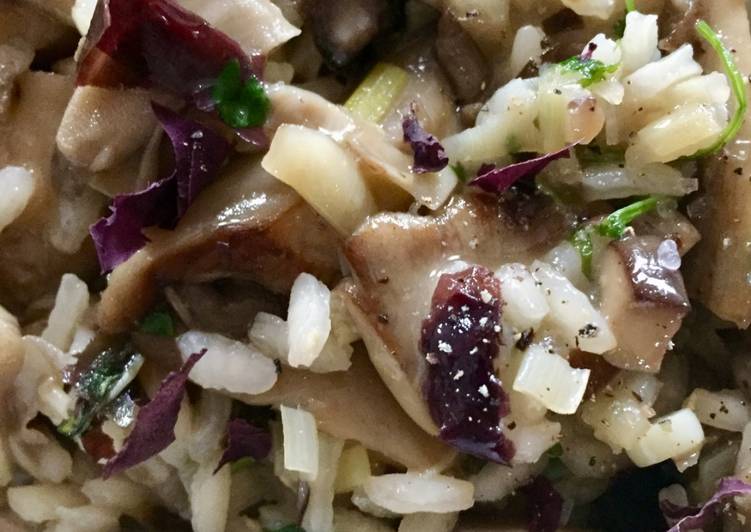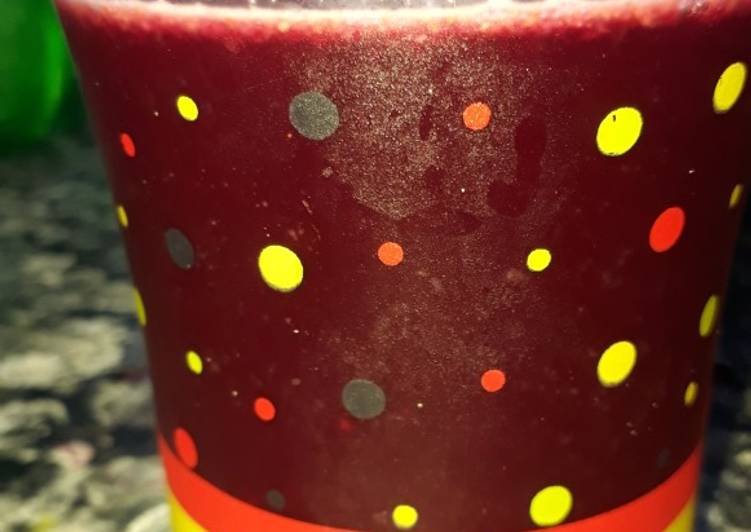
Hey everyone, it is Jim, welcome to my recipe site. Today, I’m gonna show you how to prepare a special dish, natural yeast artisan bread. One of my favorites. For mine, I will make it a bit unique. This is gonna smell and look delicious.
Natural Yeast Artisan Bread is one of the most popular of recent trending foods on earth. It is appreciated by millions every day. It is simple, it is quick, it tastes delicious. They’re fine and they look fantastic. Natural Yeast Artisan Bread is something which I have loved my entire life.
What do I need to make Homemade Artisan Bread? It's a very short list of ingredients to make this perfect loaf of homemade artisan bread. All-purpose flour, sea salt, yeast and sugar are the only ingredients you need.
To get started with this particular recipe, we have to first prepare a few ingredients. You can have natural yeast artisan bread using 5 ingredients and 10 steps. Here is how you can achieve it.
The ingredients needed to make Natural Yeast Artisan Bread:
- Take 250 g bread flour
- Make ready 50 g wholemeal flour
- Make ready 8 g salt
- Take 210 ml water
- Make ready 80 g natural yeast starter (apples, grapes, etc.)
This is known as the autolyse method. Check out the video and directions below: There is evidence natural yeast can help combat these problems. There have been many instances noted where people have been able to finally enjoy bread again without having a diabetic spike, allergic reaction, or heartburn - all because they switched to bread made with natural yeast. Unlike all of my other yeast bread recipes, this gluten free artisan bread does not have to be made in a stand mixer.
Instructions to make Natural Yeast Artisan Bread:
- Combine the bread flour and the wholemeal flour first in a bowl/container, then add the water. Mix, cover, and let rest for 30 minutes. This is known as the autolyse method.
- Once the mixture has rested for 30 minutes, combine the salt first, mix slightly and then add the natural yeast starter. Using the four-fold technique, ‘fold’ the dough in itself four times before turning the dough over and slightly rounding it. Then, cover and let rest at room temperature for 30 minutes. Repeat this process 3 times.
- For the final repetition, instead of letting the dough rest for another 30 minutes, put the dough in the fridge overnight.
- Next, take the dough out of the fridge and let the dough proof at room temperature (25℃~30℃) for about 7~8 hours, or until doubled in size.
- After the dough has proofed, take the dough out onto a work surface without flipping it over (keep the top of the dough facing up).
- Fold the dough in itself using the four-fold technique one last time. After the fourth fold, use your index finger and thumb to pinch the seam of the dough shut. Then, let the dough bench proof (about 15 minutes).
- After letting the dough bench proof, place a dry cloth on top of a bowl and generously sprinkle flour on it. Then, flour the top of the dough and flip the dough (top side facing down) into the bowl. Flour the dough again before folding the cloth over it and covering with a plastic bag. Let it rest at room temperature for 45 minutes.
- After 30 minutes, line a baking tray with parchment paper and preheat the oven to 250℃ for 15 minutes.
- After 45 minutes, transfer the dough into the baking tray by flipping it over and score the top of the dough in an ‘X’ shape. Spray the dough with a bit of water.
- Finally, bake the bread at 200℃ for 10 minutes, and then at 230℃ for 20 minutes.
I do often make it in my stand mixer, fitted with the paddle attachment, because it's easier and it does tend to make a slightly higher-rising loaf. Even if you've never made homemade bread or worked with yeast before, this homemade crusty artisan bread is for you. Remove the loaves from the oven and cool on a rack before slicing. Store leftover bread, in a paper bag or loosely covered in plastic, for a day or so at room temperature; wrap and freeze for longer storage. A leavened bread is a bread whose dough rises during the bread-making process as a result of gas being produced as the grain ferments.
So that is going to wrap it up for this exceptional food natural yeast artisan bread recipe. Thanks so much for your time. I am confident that you can make this at home. There’s gonna be more interesting food at home recipes coming up. Remember to bookmark this page in your browser, and share it to your family, colleague and friends. Thank you for reading. Go on get cooking!


